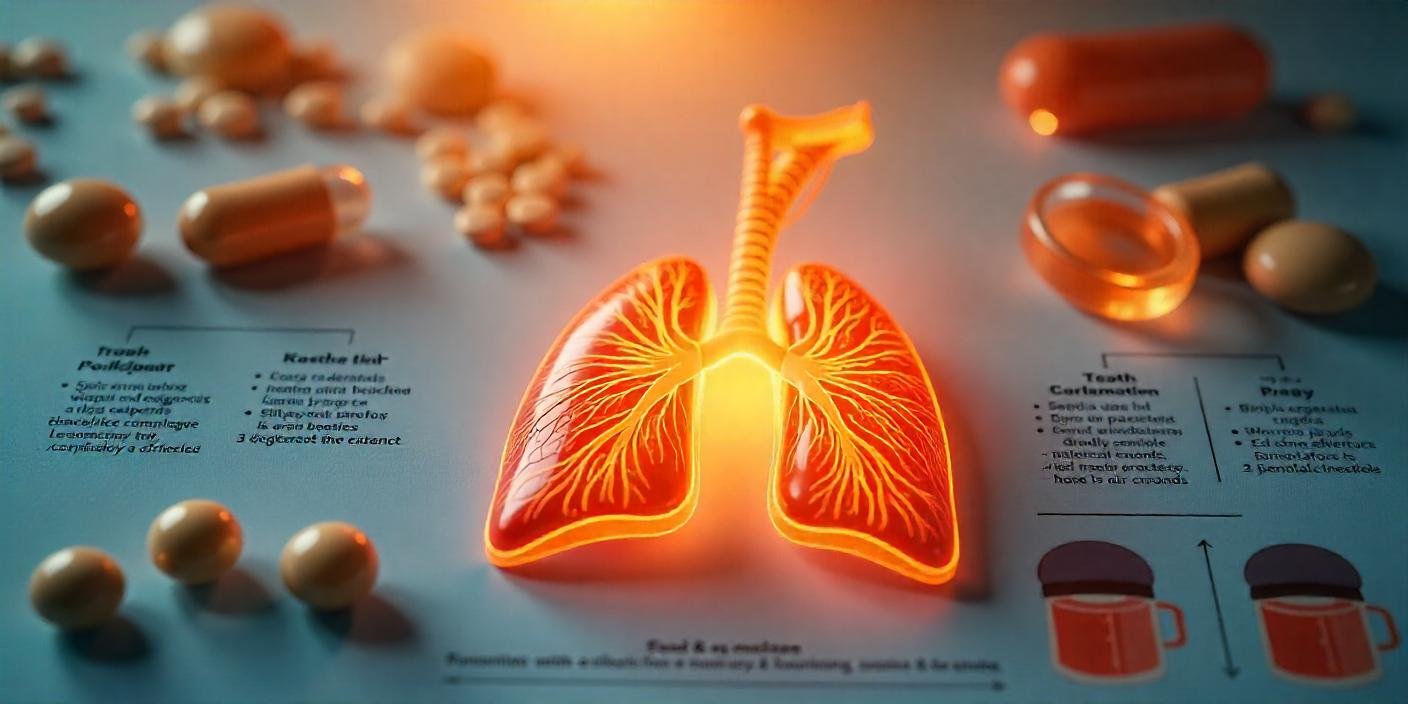Discover how pharmacological interventions for air pollution help mitigate respiratory, cardiovascular, and neurological diseases caused by environmental pollutants.
Air pollution, a persistent global issue, poses significant risks to human health, affecting millions worldwide. Comprised of pollutants like particulate matter (PM), nitrogen oxides (NOx), sulphur dioxide (SO2), carbon monoxide (CO), and volatile organic compounds (VOCs), air pollution is closely associated with respiratory, cardiovascular, and neurological diseases. While reducing pollution at its source remains vital, pharmacological interventions for air pollution play a critical role in mitigating its harmful health effects. This article explores the growing importance of pharmacology in addressing the adverse impacts of air pollution through therapeutic and preventive strategies.
Understanding Air Pollution and Its Health Impacts
Air pollution originates from various sources, including vehicle emissions, industrial activities, agriculture, and natural events such as wildfires and volcanic eruptions. The primary pollutants that pose the most significant health risks include:
- Particulate Matter (PM): Tiny airborne particles that can penetrate deep into the lungs and bloodstream, contributing to respiratory and cardiovascular diseases.
- Nitrogen Oxides (NOx): Gases from vehicles and industrial processes that contribute to smog and respiratory problems.
- Sulfur Dioxide (SO2): Emitted by burning fossil fuels, SO2 can cause respiratory issues and acid rain.
- Carbon Monoxide (CO): A colorless, odorless gas produced by incomplete combustion, which can harm the cardiovascular system.
- Volatile Organic Compounds (VOCs): Chemicals that contribute to respiratory irritation and ground-level ozone formation.
These pollutants lead to a range of serious health issues, including:
- Respiratory Diseases: Chronic obstructive pulmonary disease (COPD), asthma, bronchitis, and lung cancer.
- Cardiovascular Diseases: Heart attacks, hypertension, stroke, and atherosclerosis.
- Neurological Disorders: Cognitive decline, neurodevelopmental disorders, and increased risks of Alzheimer’s and Parkinson’s diseases.
Pharmacological Interventions for Respiratory Diseases
The respiratory system is one of the most affected by air pollution. Pharmacological interventions for air pollution focus on alleviating the damage to the lungs and airways. Key treatment strategies include:
- Bronchodilators: These medications, such as beta-agonists and anticholinergics, help relax airway muscles, making breathing easier, especially for those with asthma or COPD worsened by air pollution.
- Anti-inflammatory Agents: Corticosteroids and leukotriene inhibitors reduce inflammation in the airways, managing conditions like asthma exacerbated by pollutants.
- Antioxidants: Reactive oxygen species (ROS) generated by air pollutants cause oxidative stress, which damages lung tissue. Antioxidant treatments like N-acetylcysteine (NAC) and vitamin C help neutralize these harmful molecules.
- Mucolytics: These drugs, such as carbocysteine, help thin mucus, making it easier to clear from the lungs in chronic bronchitis or other respiratory issues.
- Immunomodulators: Biologics, such as monoclonal antibodies targeting interleukins (IL-5, IL-4), treat severe asthma and inflammation related to air pollution exposure.
Pharmacological Approaches for Cardiovascular Diseases
Air pollution also has a profound impact on cardiovascular health, increasing the risk of heart disease. Pharmacological approaches include:
- Antihypertensives: Medications like ACE inhibitors, ARBs, and beta-blockers help manage hypertension, which is often worsened by exposure to polluted air.
- Antiplatelet Agents: Drugs such as aspirin and clopidogrel reduce the risk of blood clots and cardiovascular events caused by pollution-induced inflammation.
- Statins: Known for their cholesterol-lowering effects, statins also provide cardiovascular protection by reducing inflammation and oxidative stress.
- Antioxidants: As with respiratory diseases, antioxidants mitigate the oxidative damage caused by air pollution in the cardiovascular system.
- Vasodilators: Nitroglycerin and calcium channel blockers improve blood flow and reduce the strain on the heart, especially in pollution-exacerbated conditions.
Neuroprotective Pharmacology
Recent research has linked air pollution to neurological disorders. Pharmacological interventions aim to protect the brain from the harmful effects of pollutants:
- Antioxidants: Neuroprotective agents like vitamin E and coenzyme Q10 combat oxidative stress in the brain, helping reduce the risk of cognitive decline and neurodegenerative diseases.
- Anti-inflammatory Agents: NSAIDs and other anti-inflammatory medications reduce neuroinflammation caused by air pollution.
- Neurotrophic Factors: Agents that promote neuron survival and growth, such as BDNF mimetics, are being studied for their potential to counteract air pollution-induced neurotoxicity.
- Chelating Agents: Drugs that bind to and remove heavy metals, like chelators, help mitigate the neurotoxic effects of pollutants like lead and mercury.
Preventive Pharmacology and Public Health Measures
Preventive pharmacology is essential in reducing the risks of diseases caused by air pollution. Some of the key strategies include:
- Vaccinations: Immunization against respiratory infections like influenza and pneumococcal pneumonia can reduce complications exacerbated by air pollution.
- Prophylactic Medications: Medications like inhaled corticosteroids or statins can be used prophylactically in high-risk populations, offering additional protection.
- Public Awareness Campaigns: Educating the public on how to minimize exposure to air pollution and promoting healthy behaviors are critical components of preventive efforts.
- Environmental Regulations: Strict regulations on emissions from vehicles and industries are necessary for long-term health protection. Pharmacological interventions provide immediate relief while these measures are implemented.
Research and Development in Pharmacology
Continued research is essential for discovering new pharmacological interventions for air pollution:
- Drug Development: New medications targeting specific pathways in pollution-related diseases, such as novel anti-inflammatory and antioxidant agents, are being explored.
- Biomarker Identification: Identifying biomarkers of exposure and disease can help in early detection and personalized treatment.
- Personalized Medicine: Genetic and epigenetic research can lead to tailored pharmacological interventions for individuals more susceptible to air pollution.
- Clinical Trials: Rigorous trials are needed to evaluate new pharmacological treatments for populations exposed to air pollution.
Conclusion
Air pollution remains a global health challenge, with wide-reaching effects on respiratory, cardiovascular, and neurological health. Pharmacological interventions for air pollution offer crucial solutions to mitigate its health impacts. From bronchodilators and antihypertensives to antioxidants and neuroprotective agents, these treatments play a vital role in managing pollution-related diseases. Combined with public health initiatives and environmental regulations, pharmacology can help protect human health and improve the quality of life in polluted environments.
